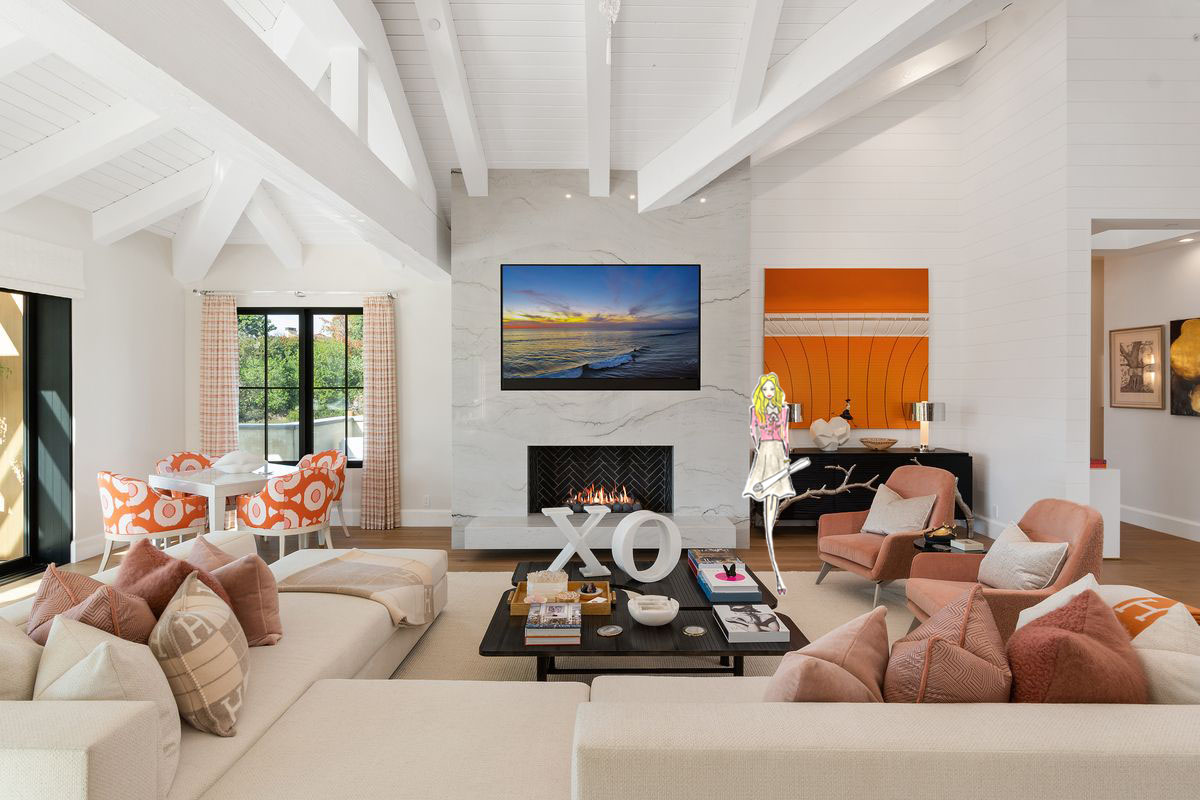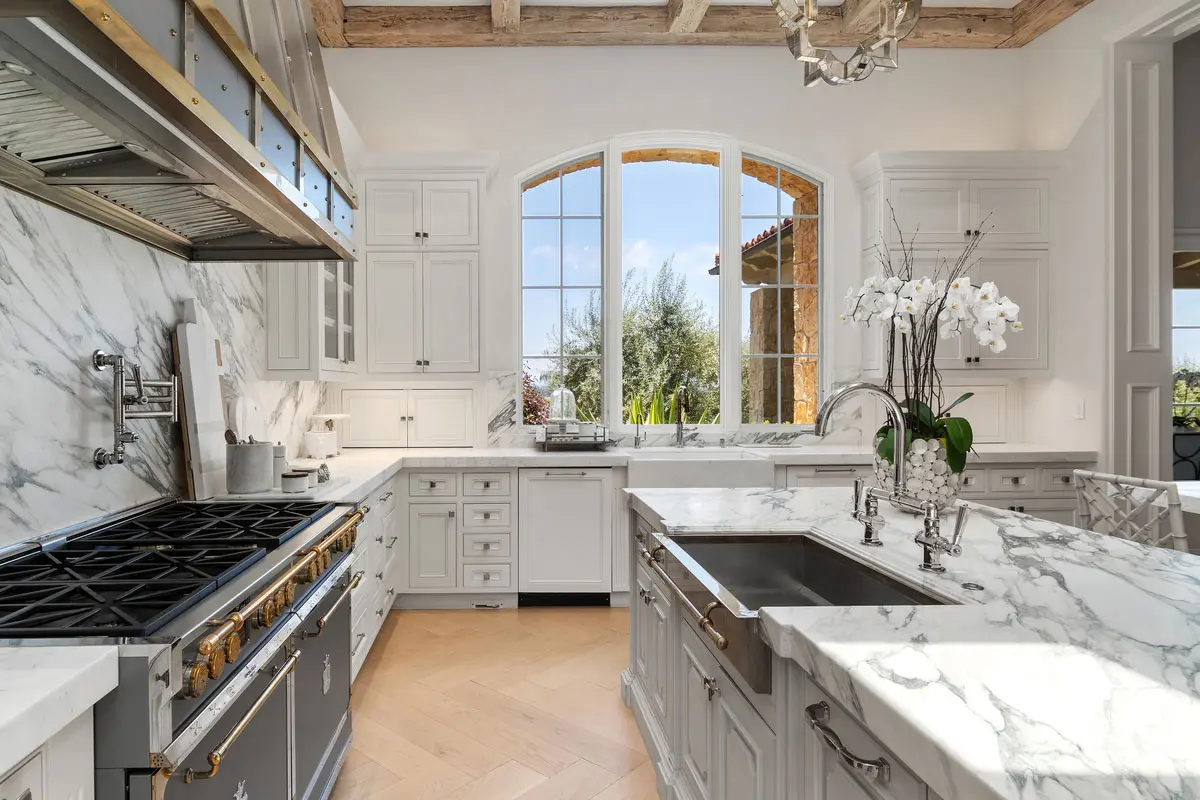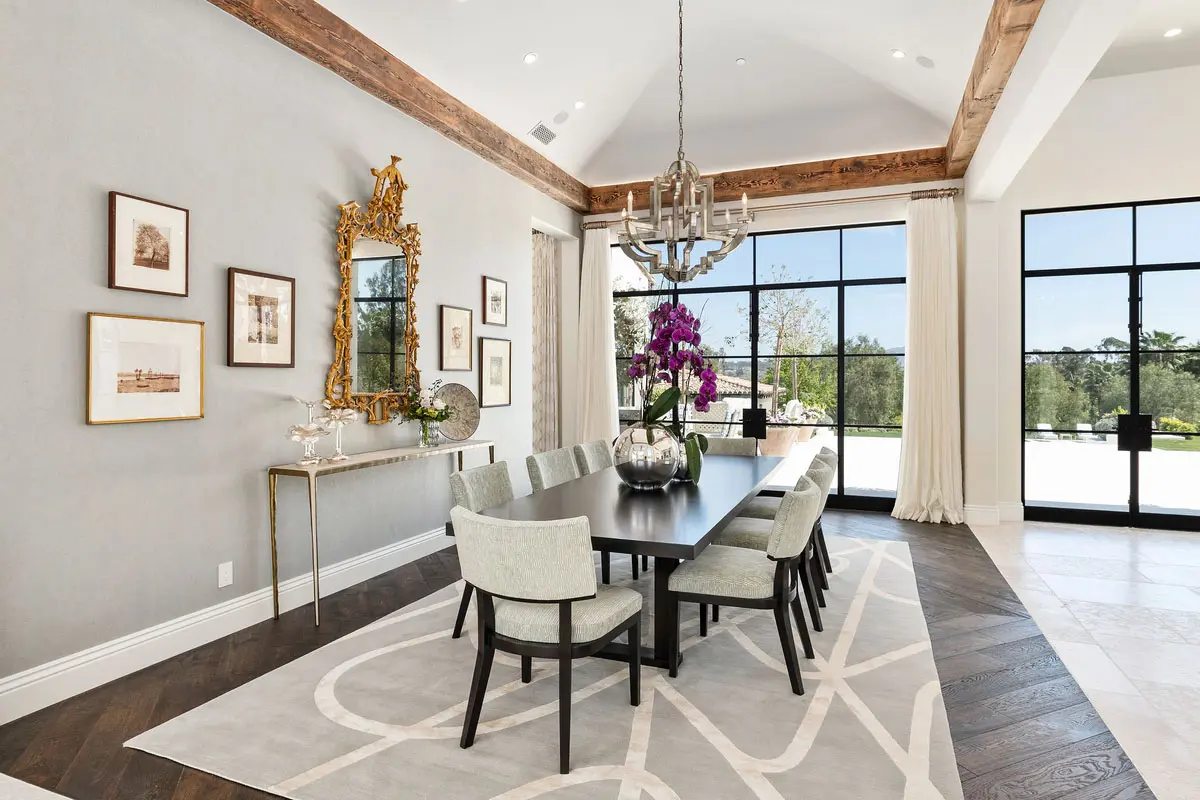A room without a rug is like a sentence without punctuation—it might make sense, but it lacks structure and rhythm. Rugs are the quiet powerhouses of interior design. They delineate zones, add texture, introduce color, and bring balance to the visual story of a space. Especially in open floor plans or multifunctional interiors, the right rug doesn’t just accessorize—it organizes.
In Solana Beach homes, where coastal luxury and casual elegance meet, Kern & Co. integrates area rugs as fundamental tools of space definition and design enhancement. From layout planning to final decoration, rugs are instrumental in shaping environments that are both functional and refined.
Why Area Rugs Matter in Interior Design
Area rugs aren’t simply decorative floor coverings. They’re spatial anchors. In open-concept homes or fluid layouts, rugs create invisible boundaries—signaling where the living room begins or the dining space ends. They draw the eye, ground furniture arrangements, and keep a room from feeling adrift.
A well-placed rug offers an architectural feel without the permanence of walls. Whether it’s softening the acoustics of a high-ceilinged room or warming up a minimalist floor, rugs lend purpose to every square foot.
Defining Zones in Open Floor Plans
Open layouts are modern, spacious, and filled with natural light—but they can also be confusing without the right design cues. That’s where area rugs shine.
In large, uninterrupted spaces, rugs segment areas with elegance. One under the sofa and coffee table subtly says “living area,” while another beneath the dining set creates a visual dining room—no walls required.
Kern & Co. often uses this principle in Solana Beach plan development projects, helping clients organize open-plan homes while preserving flow and openness. Rugs provide clarity in otherwise undefined spaces, guiding movement and activity throughout a home.
Adding Texture: Creating Sensory Depth
Texture isn’t just visual—it’s visceral. A space without tactile diversity feels flat. Rugs contribute a crucial layer of texture, bringing dimension and warmth to any room.
Think of a plush wool rug underfoot in a living room, or a tightly woven sisal rug adding organic structure beneath a dining set. These choices aren’t accidental. Texture creates contrast, balance, and comfort.
At Kern & Co., texture is treated as a design essential. When chosen intentionally, rugs elevate a space from simple to sophisticated. They soften hard surfaces, dampen echoes, and invite touch—all of which heighten the sensory experience of the interior.
Color Coordination: Bringing Harmony to a Room
Color coordination can make or break a design. Too much contrast, and things feel chaotic. Too much sameness, and the space falls flat. Rugs serve as a visual bridge—connecting disparate elements like furniture, walls, and artwork.
Let’s say a room features ocean-inspired blues and sandy neutrals. A rug that echoes these tones pulls the design together and reinforces the theme. Prefer bold accents? A patterned rug can introduce complementary colors while still maintaining cohesion.
A rug doesn’t need to match everything in a room—but it should speak the same visual language. Through smart color coordination, a rug becomes the unifying element that makes the room feel intentional and curated.
Selecting the Right Size: Avoiding Common Pitfalls
One of the most frequent mistakes in rug selection is choosing a rug that’s too small. It disrupts the scale of the room and makes furniture arrangements look awkward.
Here’s a general rule: in living areas, rugs should be large enough so that the front legs of all seating rest on it. In dining spaces, the rug should accommodate the table and all chairs—even when pulled out. Bedrooms often benefit from rugs that extend at least two feet beyond the bed frame.
Kern & Co. uses exact measurements and floor plans to ensure each rug supports the layout and visual flow. Correct sizing not only enhances functionality but also gives a room the polished look that thoughtful design achieves.
Choosing Patterns That Match Your Design Style
Pattern is personality. Some spaces need a soft whisper of design; others can handle a bold statement. The rug you choose can set the tone—whether it’s classic, eclectic, bohemian, or modern.
For a calm, understated space, consider rugs with tone-on-tone patterns or subtle organic motifs. Want to energize a neutral room? Go for a vibrant geometric or tribal-inspired design.
The trick is balance. If the room already has strong patterns—say, patterned drapes or a bold wallpaper—opt for a simpler rug. If the space is minimal, a patterned rug can act as the room’s centerpiece.
Solana Beach interiors often lean into a relaxed luxury. Coastal blues, sun-washed neutrals, and ocean-inspired motifs are common. In these environments, patterned rugs with natural tones or abstract waves work beautifully.
Placement: Positioning Rugs for Function and Flow
Even the most beautiful rug loses impact if it’s placed poorly. Placement is both an art and a science, dictating how people move through a room and interact with furniture.
In living rooms, center the rug under the coffee table and extend it beneath the sofa and chairs. In dining rooms, ensure the rug spans the area of the table and all seats. For bedrooms, a large rug under the bed with visible borders at the sides and foot creates symmetry and comfort.
Hallways and transitional spaces benefit from runners, while smaller rugs work well as layering pieces—think a hide over a jute base. Each rug should feel like it belongs exactly where it is, contributing to the overall rhythm of the home.
Creating Emotional Warmth and Visual Comfort
Rugs aren’t just spatial tools—they’re emotional ones. They add softness, color, and a grounding presence that makes a house feel like home. In family spaces, rugs offer a comfortable spot to gather. In formal rooms, they bring elegance and restraint.
They also offer seasonal flexibility. Swap a heavy wool rug for a lighter flatweave when the weather warms. Layer rugs in winter to add coziness. This adaptability gives homeowners a simple way to refresh interiors without a full redesign.
The Kern & Co. Approach to Rug Integration
With years of experience designing high-end homes in Solana Beach, Kern & Co. doesn’t treat rugs as accessories—they’re integral parts of the design process.
From early plan development to final interior decoration, rugs are mapped into the space with intention. Size, placement, texture, and color are all chosen based on the home’s layout, lifestyle needs, and aesthetic goals.
Clients benefit from an expert eye that considers every element in tandem. Furniture, lighting, rugs, and art—everything works in harmony to craft a space that feels complete and elevated.
Conclusion: Rugs as the Unsung Heroes of Interior Design
A well-chosen rug does more than fill a floor. It defines space. It enhances color. It layers in warmth and adds architectural clarity to open layouts.
For homeowners in Solana Beach and beyond, working with a team like Kern & Co. means each rug is selected with precision and purpose. Whether you’re refreshing a single room or designing a new home from the ground up, rugs will shape your space in ways both visible and intangible.
Ready to redefine your interior from the ground up? Start with the rug—and build from there.



